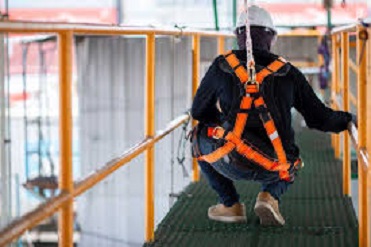If you work at a height, or in an environment where there is a risk of falling, then you should be wearing a full-body harness. A body harness helps to protect you from injuries if you do fall. They are also required in many workplaces. If you are unsure when you should be wearing a harness, or how to tie one, read on for more information. We will also discuss how long body harnesses last, and where you can buy them.
Table of Contents
OSHA and ANSI Standarts
Main Types Of Full-Body Harness
How To Wear A Full-Body Harness?
FAQs
When working at height, fall protection is the most effective way to prevent injuries. Falls are one of the most prevalent causes of serious work-related injuries and deaths. Many people believe that harnesses hamper their productivity. Regardless of how unpleasant a harness may be, it should always be used when working high up. In many sectors, fall protection is required by law.
When should you wear a full body harness OSHA?
While workers are performing work on a suspended scaffold more than 10 feet above working level, or while operating a bucket truck or aerial lift, they must wear a full-body harness (one part of a Personal Fall Arrest System).
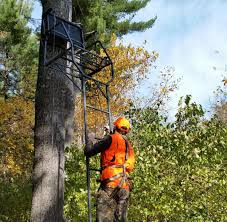
OSHA and ANSI Fall Protection Standarts
There two state organizations concerned with employee safety, they are OSHA (Occupational Safety and Health Administration) and ANSI (American National Standards Institute) which concerned with employee safety, are both recognized by the federal government. While there is some overlap between the two, their purposes are distinct, and they should not be confounded.
The Occupational Safety and Health Administration (OSHA) is a division of the U.S. Department of Labor charged with establishing and enforcing workplace safety rules. OSHA also provides training, outreach, education, and assistance to employees in order to raise their awareness and comprehension of such rules. Because OSHA regulations are statutory law that must be followed by.
The stringent ISO Z259 series for fall protection is an example of a voluntary consensus standard promoted and facilitated by ANSI. The Z359 series for fall protection is one such standard that aims to improve worker safety on the job. ANSI standards are intended to be used as suggested guidelines, and they may go further in depth than OSHA rules.
OSHA rules are in place to guarantee a secure work environment, but because of the time-consuming procedure for amending regulations, they frequently fall short of providing the most complete and up-to-date safety data. ANSI standards, on the other hand, are more current and need renewal or confirmation every five years; they represent the thinking of.
In general, these consensus standards provide a more comprehensive and easy-to-understand safety reference materials. The value of being ANSI compliant and the importance of ANSI standards should not be underestimated.
More about OSHA Fall Protection Standarts you can read at their official website.
Main Types Of Full-Body Harness
A full-body harness is a type of safety gear that helps to distribute the force of a fall evenly across the body, preventing serious injury.
There are many different types of full-body harnesses available on the market, each with its own set of features and benefits.
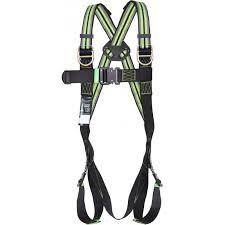
The most common type of full-body harness is the back D-ring harness, which includes a D-ring on the back that can be used to attach a safety line. Other types of full-body harnesses include chest and seat harnesses, as well as work positioning and restraint harnesses. Each type of harness has its own set of benefits that can be tailored to the specific needs of the user.
How To Wear A Full-Body Harness?
So, how do you know when it’s appropriate to wear a full-body harness? Here are some guidelines:
If you work in an industry where there is a risk of falling from heights, wearing a full-body harness is always a good idea. This includes occupations such as construction work, roofing, tree trimming, and more. In addition, if you enjoy activities such as rock climbing, hiking, or zip-lining, wearing a full-body harness can help to keep you safe in case of a fall. Finally, if you are working in an area where there is a risk of being pulled or dragged (such as near moving machinery), wearing a full-body harness can help to prevent serious injury.
As you can see, there are many situations in which it is appropriate to wear a full-body harness.
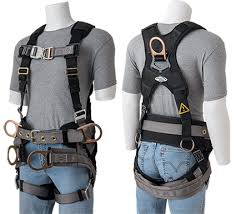
If you’re not sure whether or not wearing one is right for you, always err on the side of caution and consult with your supervisor or safety professional.
FAQs
Should you wear a Full Body Harnesses over or under winter clothing?
A harness should be worn over winter clothing. It is more visible for inspections and there is less chance for clothing to interfere with buckles and snaphooks. Additionally, when the harness is on the outside, if there is a fall and the harness is pulled upward, there is less possibility that the person could be choked.
How much is a Safety Harness?
Prices for full-body harnesses can vary depending on the type of harness, the brand, and the features included. Basic back D-ring harnesses can start as low as $40, whereas more complex versions with additional features can cost upwards of $200.
When it comes to safety, it’s always worth investing in quality gear that will help to keep you safe in case of an accident.
Where can you buy a Full-Body Harness?
There are many different retailers that sell safety equipment, including online stores and brick-and-mortar shops. Some popular brands that sell full-body harnesses include Petzl, Black Diamond, Mammut, and Fusion Climbing. It’s important to consider your specific needs and requirements.
Do some research to find a harness that is comfortable to wear and has all the features you need.
And always remember to follow the manufacturer’s instructionsfor proper use and care of your gear.
How long is a Full-Body Harness good for?
Most full-body harnesses have a lifespan of five to seven years, although this can vary depending on the type of harness and how often it is used. It’s important to inspect your harness regularly for any signs of wear or damage, and to replace it as soon as possible if it is no longer in good condition.
How to check if your Full-Body Harness is still safe usable?
There are a few different ways to check if your full-body harness is still in good condition. First, inspect the webbing for any signs of fraying or damage. Second, check all the buckles and D-rings to make sure they are securely attached and not bent out of shape. Finally, look for any cracks or breaks in the plastic or metal components.
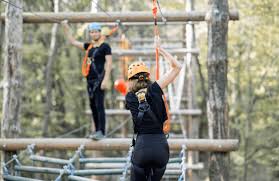
If you notice any damaged or worn parts on your harness, it’s time to replace it with a new one.
Final Thoughts
So, there you have it! Everything you need to know about full-body harnesses, including when to wear one and how to care for it. Remember, safety always comes first, so make sure to choose a quality harness that will help keep you protected in case of an accident.
Thanks for reading! We hope this article was helpful. If you have any questions or would like to share your own tips on full-body harnesses, please leave a comment below!
